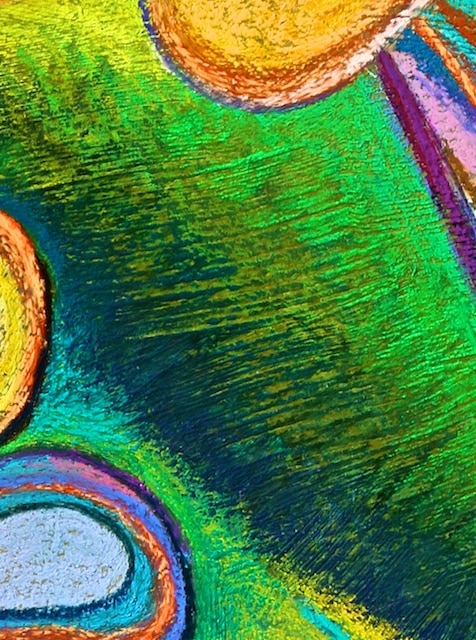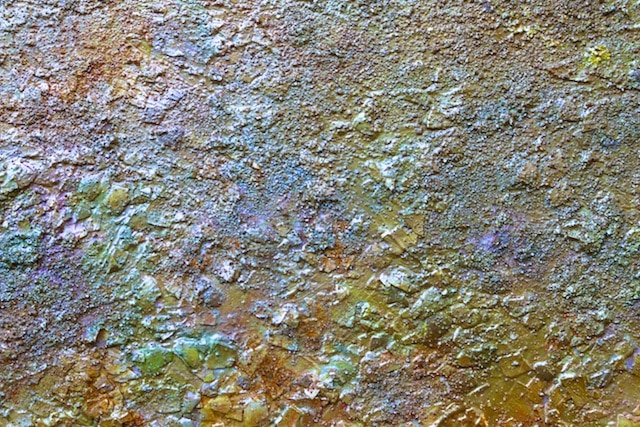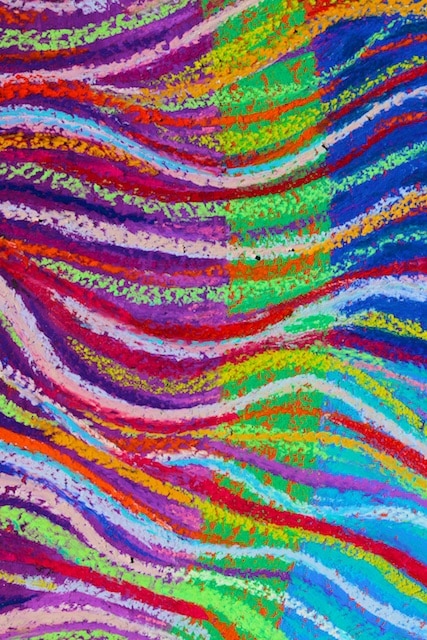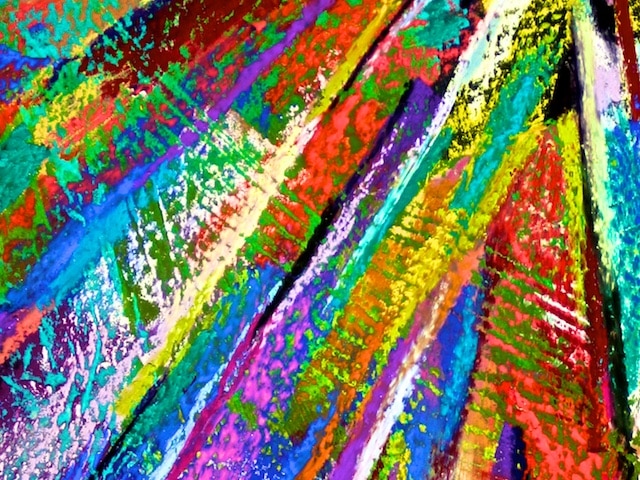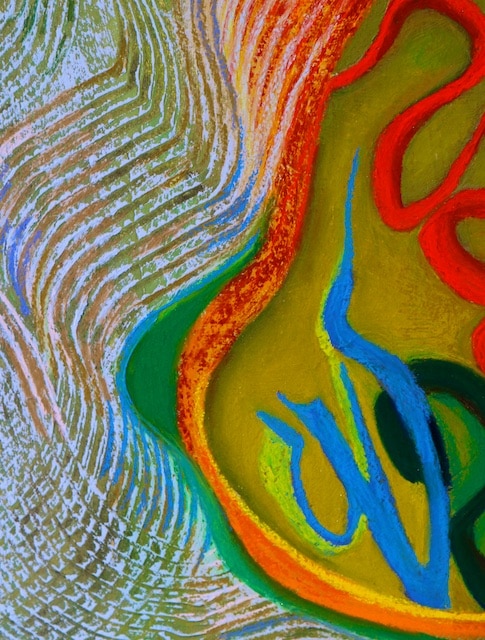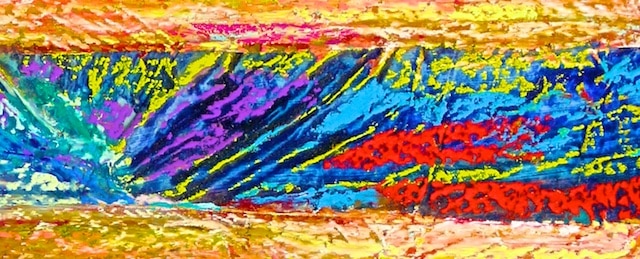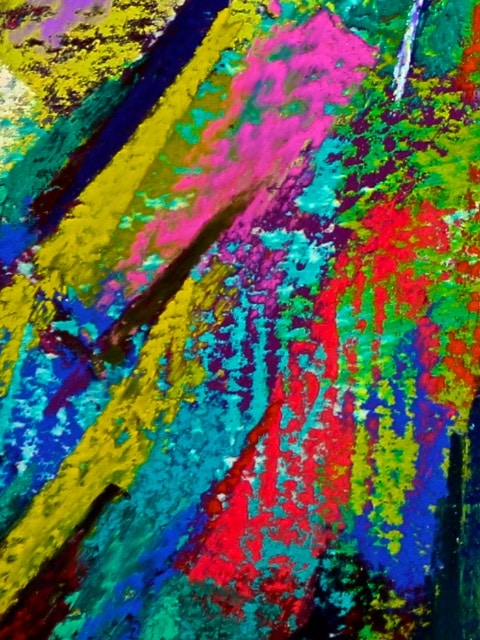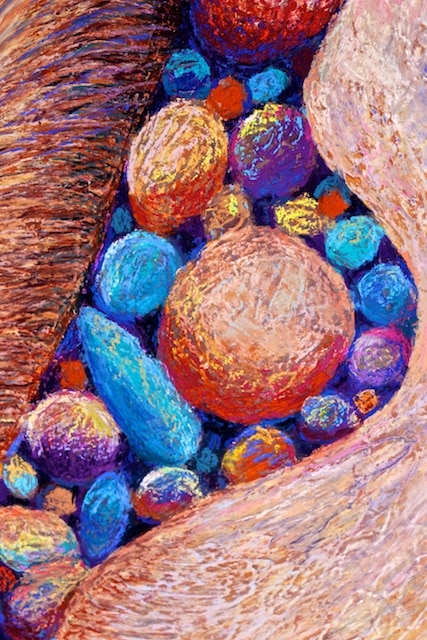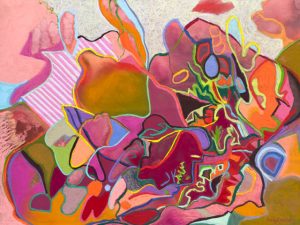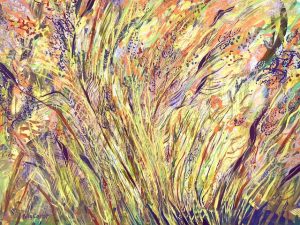I teach my pastel workshop students to paint in their texture directly, but they always want techie shortcuts, and for that, a textured acrylic ground is the best way.
I mix acrylic with either Fine Pumice Gel, or Golden Pastel Ground, mixed with a little water, and apply it with a brush or brayer. I usually color the ground by adding heavy body acrylic paint or India ink, but you could also paint an underpainting, then put a layer or two of the clear pumice or pastel ground over it. You can also use Art Spectrum Pastel Primer which already comes in colors; I usually choose a dark blue or a warm terra cotta color.
You can apply these things with brush marks all going the same way, or moving in varied strokes that either go along with or against the grain of the shape you are intending. You can scrape into it or press things into it to get more texture. You can put different types of grounds on different parts of the surface for varying effect. There’s even an especially weird sample below with crushed eggs shells mixed in. I also like adding a just a few areas of textured pumice to a purchased sanded surface like UArt, for a more extreme contrast.
If you want an even texture, the best way to do it is with a brayer used in both directions. The reason you would want to do this is that often the sanded paper used by pastellists only come as big as 30″, so if you want to paint bigger (my max is 40″ because glass is heavy) you need to prepare your own surface. You can do this with one of the grounds discussed above, but if you are covering a large area, I’d recommend using a brayer to apply clear gesso, directly on top of either Gatorbord or 8 Ply Rag Matt Board.
Please note, that unless you are only lightly scumbeling, all these acrylic textured surfaces will eat up your pastel more than a regular sanded surface will. That is why I only use them on occasion. Working on an evenly sanded, prepared surface like Sennelier La Carte Pastel Card, or Pastel Primer Sanded Pastel Paper is an absolute dream after dealing with the struggles of painting over an acrylic ground. Once you’ve experienced the difference, you will understand better why I suggest you just paint in (simulate) your texture instead.
In this post you can see close up details of where acrylic grounds have been used in my previous work. These photos should help you to see the varying effects that can be achieved by using them.
These grounds are particularly good for abstract work, and lend themselves very well to experimentation, which is why I like them. So if experimentation is your jam, give textured acrylic grounds a try, while taking care not use acrylic grounds as gimmicks or crutches.
(I’m thinking about all this because I haven’t used this stuff in a while, and have just started two new paintings utilizing some of these methods. The bottom two photos show the under-paintings of acrylic ground I did yesterday for two new works. In one I used the dark blue and terra cotta Art Spectrum Pastel primer, scrapped through and stamped in areas. In the other, I used some Art Spectrum, with some plastic wrap stuck in, which will be removed when dry, and also included Fine Pumice Gel mixed with gold paint, as well as brayered on with the addition of India ink mixed in. We’ll see how these turn out when pastel is applied!)
1 Comment
Pingbacks
-
[…] painting was done on the first of the two textured grounds I showed you in last week’s post, although the underpainting was photographed on its […]


